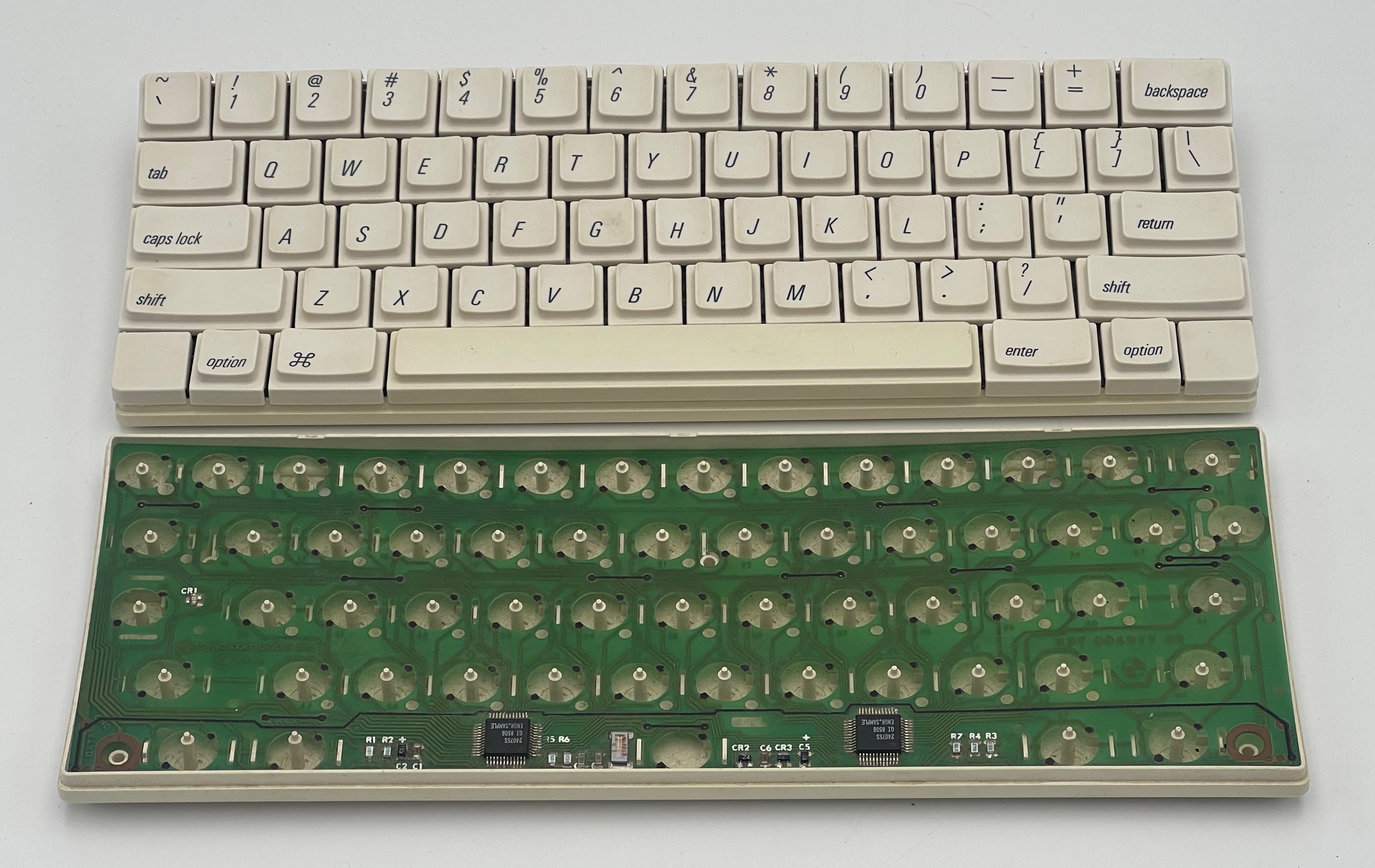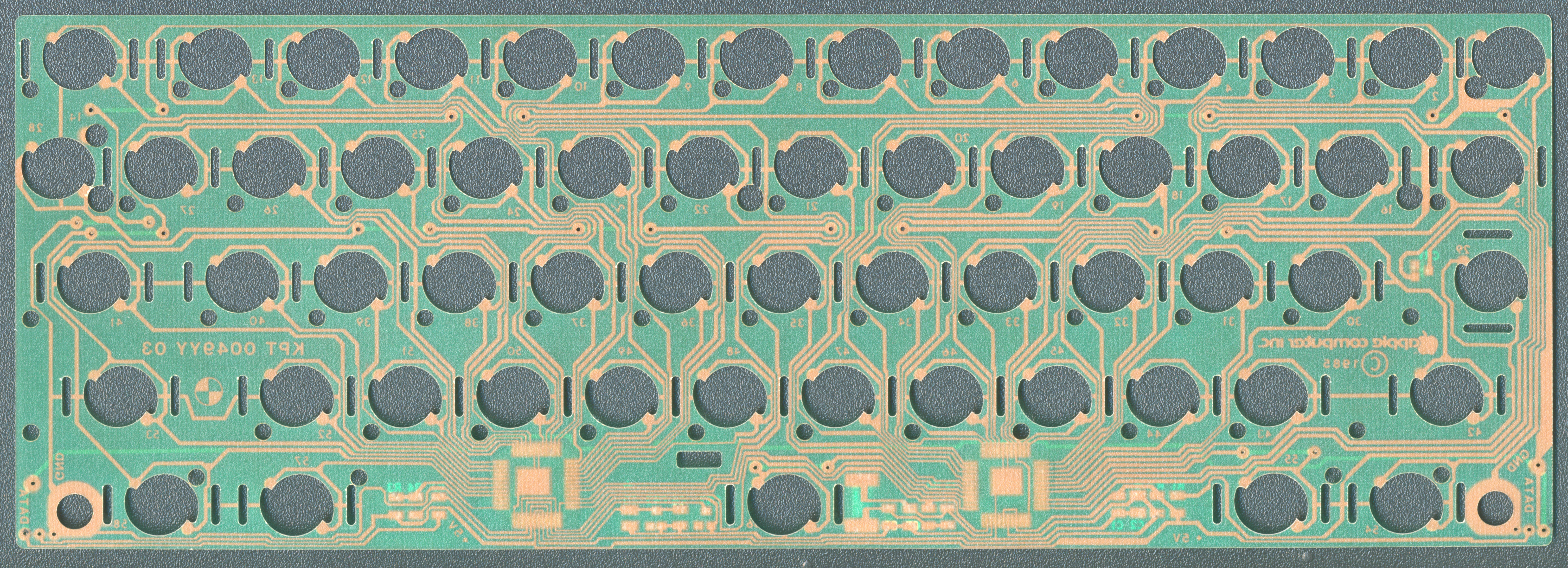Rich Mansueto on the Cassie Keyboard
Nov. 4, 2022
Hi Tom,
It's been a pleasure talking to you about the cassie keyboard. It was a fun project. I was a mechanical engineer at Apple from 82-87. The initial design goal was to create a fully encoded keyboard with full size spacing (.75) between keys and only as big as the keys with no perimeter. This was a challenge for several reasons but the biggest was where to put the processors. My initial thoughts were under the space bar since that was the only place possible. Surface mount technology was new, and we didn’t have experience in it, so we built a prototype smt line in our lab to learn how to do it. We also were developing a new bus system for connecting the keyboard, mouse and any other devices in a daisy chain fashion. Mike Clark, who you spoke to, was doing that.
Next thing was to make a modular keyboard for ease of assembly. I came up with the idea of a curved base, so we didn’t have to have sculptured keycaps, but I was trying to have the switches be integral and not use individual switches like we used on our other keyboards. I came up with a switch design that used a molded post on the base with a nylon sleeve to provide a smooth bearing surface and the tactile feel. The base plate had all the switch posts perpendicular to the radius, which made a quite unique and difficult tool to make. The company that made the tool won an award for it because it was so unique and almost impossible to do.
The bearings were heat staked on the base plate. The pcb had the processors and switch contacts on it, and we actually printed carbon pads on the pcb for the contacts. The pcb was put in the base plate, then a sheet of copper spiral springs was installed and then a metal plate to add some weight and then it was screwed together. After assembled the keycaps were installed and then we had a proprietary process for printing the characters on the entire keyboard.
Another interesting thing we did was that we used a 4 conductor 1/8” jack for connecting the cable. The feet on the keyboard housed the female connector and the male end actually formed the other half of the foot.
It was a very radical design from what was on the market and after we developed it and had it operational we were told it might be perceived as too small for consumers, even though it was a full size keyboard!
I would be happy to answer any other questions you may have and feel free to share this. Thanks for being interested in my work.
Rich Mansueto
| Attachment | Size |
|---|---|
| 284.28 MB |







